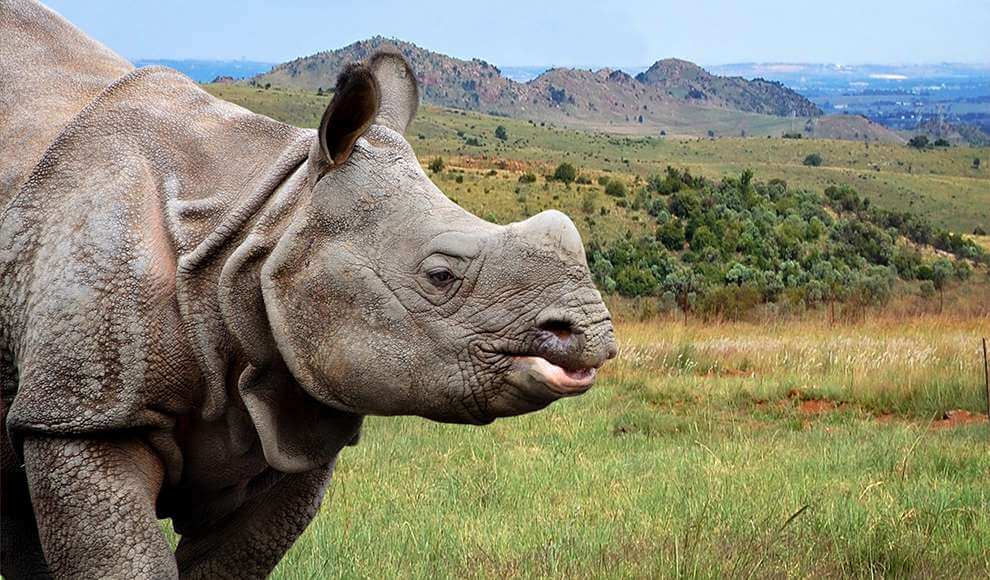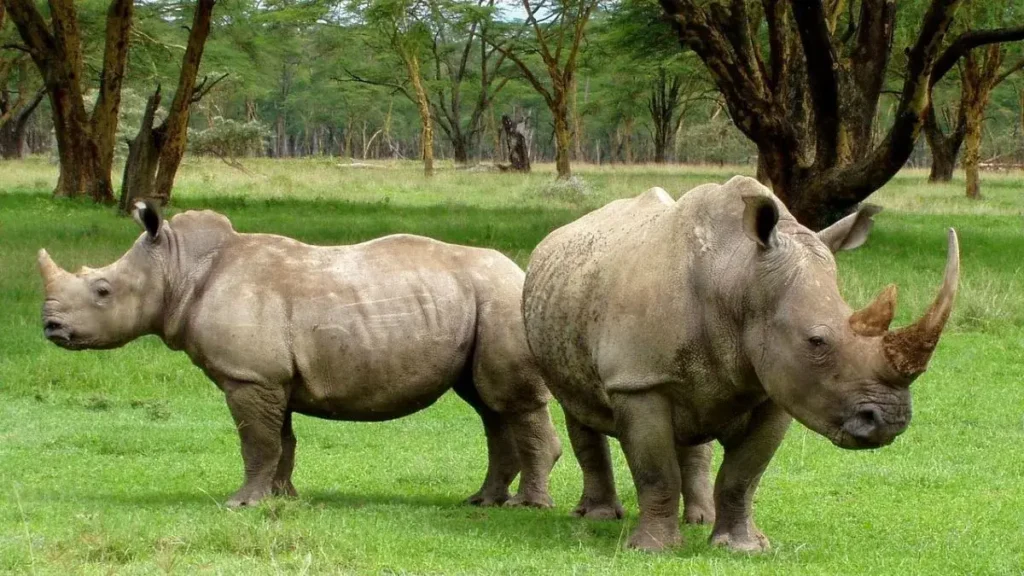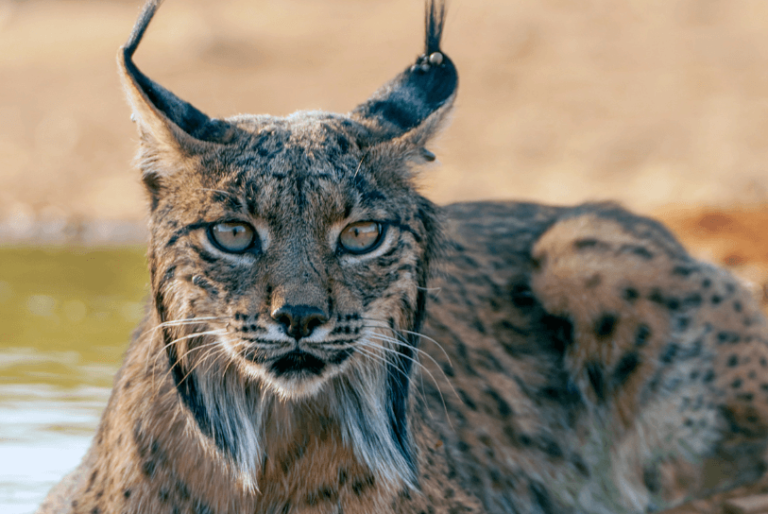Javan Rhinoceros: Facts, Habitat, Behavior, and Conservation
The Javan rhinoceros (Rhinoceros sondaicus), one of the rarest mammals in the world, faces the constant threat of extinction. This elusive animal is found primarily in Indonesia and remains a symbol of conservation efforts due to its fragile population. Below is an in-depth exploration of this magnificent species.
Contents
Scientific Classification
- Kingdom: Animalia
- Phylum: Chordata
- Class: Mammalia
- Order: Perissodactyla
- Family: Rhinocerotidae
- Genus: Rhinoceros
- Species: Rhinoceros sondaicus
The Javan rhinoceros is one of five remaining species of rhinoceros in the world, sharing the genus Rhinoceros with the Indian rhinoceros.
Physical Characteristics

- Size: Adult Javan rhinos can reach 3 to 3.5 meters long and stand around 1.4 to 1.7 meters tall at the shoulder.
- Weight: They typically weigh between 900 to 2,300 kg.
- Skin: They have thick, loose skin that forms folds around their neck, shoulders, and legs, giving them an armored appearance.
- Horn: Unlike other species, Javan rhinos have a single horn, which is relatively small, growing up to about 25 cm. This horn is made of keratin and is primarily used for foraging rather than defense.
- Color: Their skin is grayish-brown and often coated in mud, which protects them from insects and helps regulate their body temperature.
Habitat
The Javan rhinoceros was once widespread across Southeast Asia. Still, they are confined to a single habitat—Ujung Kulon National Park in the western part of the Indonesian island of Java. This park provides a dense tropical rainforest environment, essential for the rhinos’ survival. They prefer areas with abundant water sources and thick vegetation.
Behavior

Javan rhinos are elusive, solitary animals with little interaction outside the mating season. They are known to:
- Territorial Marking: Males are highly territorial and use dung, urine, and scraping of the ground to mark their territory.
- Nocturnal: While they may be active at dawn and dusk, Javan rhinos are primarily nocturnal.
- Mud Bathing: They frequently wallow in mud pools to protect their skin and regulate body temperature.
Diet
Javan rhinos are herbivores, with a diet consisting mainly of:
- Leaves
- Shoots
- Twigs
- Fruits
They consume various plants, and their foraging behavior helps in forest regeneration by dispersing seeds through their dung.
Reproduction
- Gestation Period: The gestation period for a Javan rhino is approximately 16 months.
- Calves: Females typically give birth to a single calf, which stays with its mother for up to 2 years before becoming independent.
- Breeding: Javan rhinos are believed to have low reproductive rates, which is one of the reasons their population has struggled to recover.
Predators
Thanks to their size and thick skin, Adult Javan rhinos have no natural predators. However, calves may occasionally fall prey to large predators such as tigers or leopards, though such events are rare. The biggest threat to the species comes from humans, particularly in the form of habitat destruction and illegal poaching.
Conservation Status
The International Union for Conservation of Nature (IUCN) lists the Javan rhinoceros as Critically Endangered. Recent estimates show fewer than 80 individuals remain in the wild, all in Ujung Kulon National Park. Conservation efforts focus on:
- Habitat protection: Preserving and expanding their habitat is crucial for survival.
- Anti-poaching measures: Strict anti-poaching laws and patrols are in place to protect these animals.
- Genetic diversity: Scientists are exploring ways to maintain genetic diversity in this small population to prevent inbreeding.
Evolutionary History
Javan rhinos are part of the family Rhinocerotidae, which evolved over 50 million years ago. Their ancestors roamed much of Asia, and fossil evidence suggests they once inhabited areas from China to India. The species diverged from the Indian rhinoceros millions of years ago. Still, while their Indian cousins have managed to recover in number, the Javan rhino population has sharply declined due to habitat loss and human exploitation.
Relationship with Humans
Historically, Javan rhinos were hunted for horns, which are highly prized in traditional Asian medicine. Despite strict laws, illegal poaching remains a threat. Additionally, the encroachment of human settlements into their habitat has led to deforestation and fragmentation of their range.
Today, local communities around Ujung Kulon National Park have been involved in ecotourism and conservation initiatives, helping protect this critically endangered species. Education programs and outreach efforts also work to raise awareness about the plight of the Javan rhinoceros.
Interesting Facts about the Javan Rhinoceros
- Shy and Solitary: Javan rhinos are among the most elusive large mammals; very few people have seen them in the wild.
- Only One Population Left: All remaining Javan rhinos are confined to Ujung Kulon, making them highly vulnerable to natural disasters like tsunamis or disease outbreaks.
- Muddy Armor: The thick folds of the Javan rhino’s skin, combined with their regular mud baths, give them a rugged, armored appearance.
- Low Reproductive Rate: Javan rhinos are known to have fewer offspring than other rhinoceros species, which exacerbates their risk of extinction.
Conservation Efforts and Future Outlook
Given their critical status, the future of the Javan rhinoceros remains uncertain. However, the Indonesian government, alongside international conservation organizations such as the World Wildlife Fund (WWF), is taking significant steps to protect the species:
- Anti-poaching efforts: Increased patrols and modern technologies such as drones are being used to monitor the rhinos and prevent poaching.
- Habitat expansion: There are ongoing efforts to extend the habitat of the Javan rhino by clearing invasive species that limit the growth of native plants, which serve as their food.
- Research and monitoring: Extensive research is being carried out to better understand the species’ needs, with continuous monitoring of their health, behavior, and population dynamics.
Conclusion
The Javan rhinoceros stands as a testament to biodiversity’s fragility and conservation efforts’ importance. With fewer than 80 individuals in the wild, saving this species requires a global commitment to habitat protection, anti-poaching laws, and scientific research. While the road ahead is difficult, there is hope that with continued efforts, the Javan rhinoceros can one day thrive again in its native habitat.
- Golden Retriever Pros and Cons: What Every Pet Parent Should Know - 15 September 2025
- Cane Corso Dog Breed: Health, Care, and Lifespan - 14 September 2025
- Catahoula Leopard Dogs: Description, Temperament, Lifespan, & Facts - 21 July 2025







